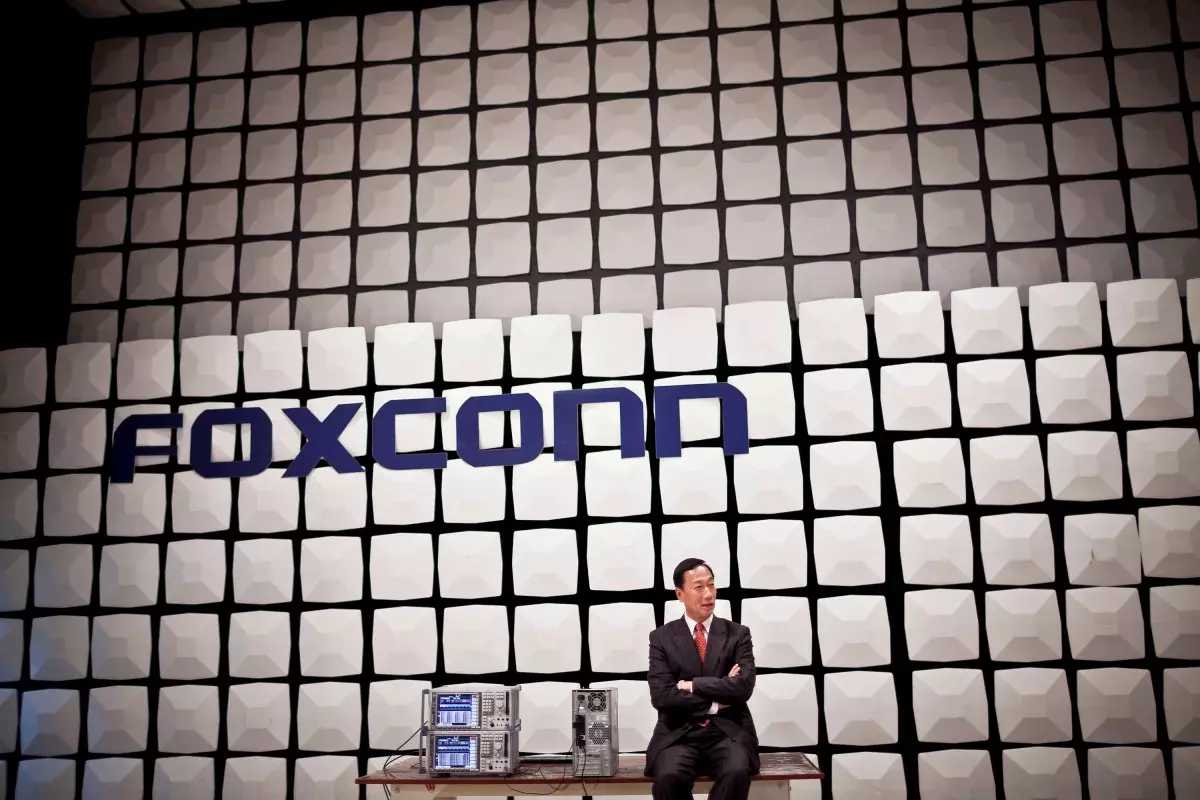In a groundbreaking move that signals a shift in global manufacturing dynamics, Foxconn has achieved a significant milestone by securing governmental approval to establish a semiconductor plant in collaboration with the HCL Group. This venture, heading towards an investment of 37 billion Indian rupees (approximately $435 million), epitomizes India’s determined efforts to emerge as a formidable player in the semiconductor sector—an industry that serves as the backbone of modern technology. With this initiative, India is not merely looking to be another cog in the global supply wheel but is aiming to carve a niche as a leader, especially in the context of reducing reliance on China.
This endeavor will unfold near the Jewar airport in Uttar Pradesh, with operations set to commence in 2027. The plant’s primary focus will be on producing display driver chips, which play a vital role in the functionality of a myriad of devices, including smartphones, laptops, and vehicles. This strategic move aligns well with India’s ambitions to not just participate in the semiconductor supply chain but to lay the groundwork for developing complete fabrication facilities, commonly referred to as ‘fabs’. Such progress is crucial, considering India’s current lack of advanced chip-manufacturing capabilities.
Strategic Diversification: A Response to Global Challenges
Apple’s decision to expand its manufacturing footprint in India is more than a mere business strategy; it represents a proactive response to the escalating trade uncertainties between the U.S. and China. As suggested by Apple CEO Tim Cook, having a stronger base in India can mitigate risks associated with potential tariffs and other trade complications that could inflate product prices. This insight not only reveals Apple’s commitment to India as a manufacturing hub but also underscores a broader trend in which multinational corporations are re-evaluating their supply chains in light of geopolitical tensions.
The semiconductor plant’s construction in India serves as a testament to Apple’s vision of a diversified production strategy. The collaboration with Foxconn and HCL positions India as a fundamental player in the assembly and testing domains, contributing significantly to Apple’s “Make in India” initiative. However, while the initial focus will be on assembly and testing—rather than fabrication—it opens a gateway for future advancements in local chip production, an essential evolution as Apple’s reliance on external suppliers becomes increasingly scrutinized.
The Role of Government in Accelerating Growth
The Indian government’s involvement plays a pivotal role in this ambitious project. By allowing Foxconn to leverage incentives that cover up to 50% of capital expenditure, authorities are fostering an environment conducive to growth in the semiconductor industry. This strategy aligns with the broader vision outlined under India’s state-run semiconductor scheme, which aims to elevate the country to an international standard in semiconductor manufacturing.
Previously, incentives for various semiconductor projects, including a significant initiative led by Kaynes Semicon, highlight the government’s commitment to bolstering its semiconductor capabilities. By creating a supportive ecosystem for companies like Foxconn, India stands on the precipice of transforming its technological landscape.
Future Implications and Sectoral Transformations
Looking ahead, the approval of the Foxconn-HCL semiconductor plant could signal the dawn of an era where India not only fulfills its own semiconductor needs but also positions itself as a key player on the global stage. By starting with assembly and testing, this plant could eventually lead to advancements in indigenous chip production, including display panels—an outcome that would create a ripple effect across numerous sectors, from consumer electronics to automotive industries.
Moreover, as Foxconn and Apple deepen their ties with India, the anticipated expansion into areas such as AirPod manufacturing could foster job creation and technological advancement. Such growth would inevitably spiral into the local economy, providing employment opportunities and enhancing India’s standing in the global tech ecosystem.
The anticipation surrounding the Indian government’s subsequent semiconductor incentive programs adds another layer of excitement. The semiconductor landscape is evolving rapidly, and the innovations that follow could very well range from advanced fabrication techniques to new technologies that could reshape the digital future. While Minister Ashwini Vaishnaw did not divulge specifics during the recent press conference, the business community remains hopeful that more initiatives will follow.
As India steps into this transformative journey, the Foxconn-HCL venture is poised to be a defining chapter in the nation’s quest for technological sovereignty, marking the beginning of a new era in semiconductor manufacturing and global technological prowess.

